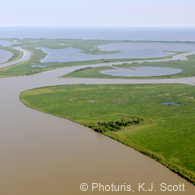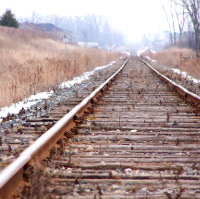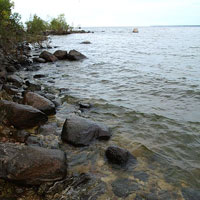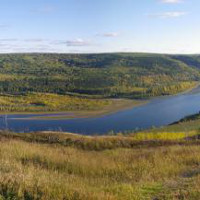
News |
- Ontario To Protect Bees: Neonic Pesticide Ban
- Renewables Shift Within Reach
- Experts See Need for Lake Winnipeg Improvements
- More Oil Train Derailments Less Action
- Canada World Water Day 2015
- Lake Winnipeg Hearings Open in Winnipeg
- Site C Dam is Damned
- Manitoba Climate Plan Consultations Underway
- Premiers to Meet on Climate Change - Be There
- Two Environment Act Reviews - No Results
- Fracking Sand to Come from Manitoba
- Obama Vetos Keystone XL Bill
| Ontario To Protect Bees: Neonic Pesticide Ban | 27 March 2015 |

"These regulations will restrict the use of dangerous, bee-killing pesticides on corn and soybean crops," said John Bennett, National Program Director of the Sierra Club Canada Foundation (SCCF). “The new rules will cover millions of acres. It’s good news for the bees and other pollinators.” “We know there is sound science and strong public support behind protecting pollinators with tough, timely action on neonics," Lisa Gue of the David Suzuki Foundation said. "But to see this level of participation and near-consensus in public comments is extraordinary." Other groups, such as the Ontario Beekeepers’ Association and the Canadian Association of Physicians for the Environment have conducted polls and found a large majority of Canadians want restrictions on neonics. The proposed restrictions are slated to come into law on July 1 of this year, with a second round of consultation to take place in the spring. The pesticide industry is opposing the restrictions.
View March 23, 2015 Sierra Club Canada media release |
|
 Print version Print version |
Top |
| Renewables Shift Within Reach | 20 March 2015 |

To get there, they recommend a national carbon-pricing plan, and greater effort to move electricity produced from low-carbon sources such as hydro dams across provincial borders. A major global climate treaty, in the works for years, is supposed to be finalized in December at a summit in Paris, but most countries have yet to announce what their national contributions to the pact will be. Earlier this month the European Union unveiled its contribution, vowing to cut greenhouse gas emissions at least 40 per cent by 2030, compared to 1990. In a 56-page policy document scheduled for release on Wednesday, March 18, more than 70 scientists, engineers and economists say Canada is in a more favourable position than most countries for a switch to renewable power, including large-scale hydroelectric. The most significant barrier is not technical or economic, but a lack of political will, they said. The report says 77 per cent of Canada’s electricity is already produced without burning fossil fuels, and it has many sources of renewable energy. “This is within reach. We could be the world leader … that’s a very important message for Canadians to understand,” said Catherine Potvin, an ecologist and Canada Research Chair in climate change mitigation at McGill University, who led the writing of the document.
View Pembina Institute Canada's Renewable Energy Future page |
|
 Print version Print version |
Top |
| Experts See Need for Lake Winnipeg Improvements | 20 March 2015 |

The Minister for the Water Power Act, in Manitoba’s cabinet, will determine whether to issue the final licence. The recommendations of the CEC and the results of First Nation consultations are the primary sets of information the Minister uses for the decision. The final licence would be backdated to 1976, which means that a renewal of that licence would need to be in place for 2026. Dr. Gordon Goldsborough of the University of Manitoba reviewed the status of Netley and Libau marshes at the mouth of the Red River, where it flows into the south basin of Lake Winnipeg. His analysis applies to the many coastal wetlands and marshes around the lake. Netley and Libau marshes are dramatically different than 100 years ago, and have experienced more significant changes since the 1970s. Dr. Goldsborough outlined what needs to happen in lake water levels for the coastal wetlands and marshes to regain their ecosystem functions and services. Dr. George McMahon, a retired US Corp of Engineers reservoir expert, attended the hearings for a week, including to hear the Manitoba Hydro panel presentation. Dr. McMahon reviewed the hydrological and operations models, and planning standards for regulation of Lake Winnipeg water levels. His observations included the need for the whole hydro system to be operated, managed, and planned together. To this goal he recommends public operating rules for each generation station and reservoir. These operating rules would become a suite of operating rules by which the hydro system could be audited, reviewed, adjusted, or changed. Dr. McMahon told the hearing that if the current wet cycle of ten or more years in Manitoba continues it would be very difficult to continue to operation LWR at 711-715 feet, as per the current licence.
View Manitoba Wildlands page content for LWR CEC Hearings |
|
 Print version Print version |
Top |
| More Oil Train Derailments Less Action | 20 March 2015 |

The recommendations come in the wake of the 2013 Lac-Mégantic rail disaster in which 47 were killed, but also as small Canadian communities grapple with three train derailments in the last month. A recent incident occurred when 13 train cars derailed near the small community of Gregg in southern Manitoba, about 50 kilometres east of Brandon. Canadian National Rail (CN) reported that some refinery cracking stock was spilled but there was no threat to public safety. On Saturday, a second recent derailment near Gogoma, Ont., caused a rail-car fire and some oil spilled into a nearby river system. Rail-safety officials said they would not be pursuing an investigation into a derailment that spilled 30,000 litres of a petroleum product on farmland near Carberry. CN, which operated the train, gave no further details on what investigators have found so far since the 13 cars carrying a type of bitumen left the track the evening of March 11. The Transportation Safety Board (TSB) described the accident as a "Class 5 occurrence," meaning there will be no further review for "possible safety analysis, statistical reporting, or archival purposes." A TSB spokesman gave no cause for the derailment.
View March 14, 2015 Winnipeg Free Press article |
|
 Print version Print version |
Top |
| Canada World Water Day 2015 | 20 March 2015 |

There are thousands of Canadians who cannot safely drink the water out of the taps in their homes. In some extreme cases, they may not even have indoor plumbing. The worst part is that for many, help isn’t on the way. Canada lacks a national water law and rigorous, enforceable water quality standards. Instead, it relies on an uneven patchwork of provincial water policies and regulations to protect drinking water. This means that from coast to coast to coast, our drinking water is not available or equally protected. While most major Canadian cities have relatively sophisticated water treatment facilities, many rural, low-income, or First Nations communities lack such infrastructure and rely on untreated or minimally treated water. World Water Day is a day to make sure Canada does better.
View March 20, 2015 The Chronicle Journal article |
|
 Print version Print version |
Top |
| Lake Winnipeg Hearings Open in Winnipeg | 13 March 2015 |

Three weeks of hearings are booked during March, with a return to the hearing in Winnipeg after Easter. During the January and February tour several sessions were held in First Nations communities. Manitoba Hydro’s Panel presented its highlights from their formal filing during summer 2014. The utility’s position is that there are no impacts to the Lake from making Lake Winnipeg a reservoir for 40 years, and that all the impacts are downstream, north of Lake Winnipeg inside the hydro system. All exhibits, reports, transcripts from the Lake Winnipeg Regulation hearing are posted on the CEC website.
View Manitoba Clean Environment Commission Hearings page |
|
 Print version Print version |
Top |
| Site C Dam is Damned | 13 March 2015 |

Source: Wilderness Committee
The B.C. government was wrong to approve construction of the $8.8-billion Site C dam project without an independent examination of cost and need, says Swain. Some of the questions that still need to be answered, according to Swain, include the real cost and availability of alternatives, how B.C. should use its Columbia River rights, how British Columbians will react to increased electricity prices (which could decrease demand) and how the province’s liquefied natural gas industry will develop. Site C would be a hydroelectric facility on the Peace River, seven kilometres south of Fort St. John. A newly created reservoir would be about 83 kilometres long and two-to-three times wider than the current river, flooding 5,550 hectares of land. Current estimates are it would take eight years and $8.5 billion to build the facility. Farmers, ranchers and First Nations have all objected to Site C, which was rejected thirty years ago.
View March 12, 2015 The Common Sense Canadian article |
|
 Print version Print version |
Top |
| Manitoba Climate Plan Consultations Underway | 13 March 2015 |

Climate change threatens social, economic and environmental systems on a global scale. Governments at every level are seeking to increase climate resilience, lower vulnerability to the impacts of climate change, reduce greenhouse gas (GHG) emissions, implement adaptive actions and participate in the newly emerging green economy. Manitoba is no exception. The next Manitoba climate change plan will integrate both adaptation and mitigation strategies, with an increased focus on adaptation. It will be important for the coming plan to consider the adaptation impacts of mitigation actions (and vice versa), as well as identify areas where co-benefits can be achieved and negative side effects avoided regarding mitigation or adaptation actions. To date Manitoba is not counting and reporting emissions for any site or source less than 100,000 tonnes per year. Manitobans are encouraged to go online and respond to the discussion paper.
View January 2015 International Institute for Sustainable Development background paper |
|
 Print version Print version |
Top |
| Premiers to Meet on Climate Change - Be There | 6 March 2015 |

Organizations across Canada are being lead by Quebec’s environmental movement and include: labour, faith, and environmental organizations who are endorsing the April 11, 2015 mass demonstration in Quebec City. Endorsers include Suzuki Foundation, Greenpeace, Environmental Defense Canada. See link to endorsers list below. The organizers and endorsers want us all to think about our situation: We cannot protect the climate while supporting extreme energy projects like the tar sands and the pipelines that enable them.
View Act on Climate website |
|
 Print version Print version |
Top |
| Two Environment Act Reviews - No Results | 6 March 2015 |

The Manitoba Law Reform Commission began its review of the Manitoba Environment Act in summer 2013, with a public launch workshop in January 2014. The stated objective of their review was to review “Manitoba’s Environmental Assessment and Licensing Regime.” The Commission undertook in person interviews that were extensive, combined with their own research. They posted their report for public comments, ending March 6, 2015. Manitoba Wildlands submitted a combined set of comments and recommendations regarding the Environment Act, environmental assessment, and licensing regime in Manitoba in September, 2014. The aim was to respond to both the Law Reform Commission and Manitoba Conservation reviews. To date it is not clear how the Manitoba Wildlands recommendations and comments will be applied to decisions about updating the Environment Act in Manitoba. The specifics of the mandate for the two reviews have not been made public. Changes in laws in Manitoba go through a public hearing review process each year in June, through a committee of the Legislature. There are no amendments, or draft legislation available at this time.
View January 2015 Manitoba Law Reform Commission Report |
|
 Print version Print version |
Top |
| Fracking Sand to Come from Manitoba | 6 March 2015 |

Source: Geology.com
Frac sands are used as a proppant, or sized particles mixed with fracturing fluid to hold fractures open after a hydraulic fracturing treatment. This treatment, known as hydrofracing, is the forcing of a concoction of frac sands, viscous gel and other chemicals down a well to prop open fractures in the subsurface rocks thus create a passageway for fluid from the reservoir to the well. Toronto-based Claim Post Resources Inc. is fast becoming a provider of premium white silica sand proppant to the oil and gas industry in the U.S. and Canada. Claim Post Resources, Manitoba center is near Seymourville on the southeast shore of Lake Winnipeg, some 200 km northeast of Winnipeg. Immediately east of the property is the Hollow Water First Nation, adjacent to Lake Winnipeg. Manitoba will be adding another project that increases climate change, the development of frac sands for hydraulic fracturing. Hydraulic fracturing is a method of extracting liquid natural gas that causes earthquakes and contaminates aquifers and drinking water.
View July 30, 2014 The Northern Miner article |
|
 Print version Print version |
Top |
| Obama Vetos Keystone XL Bill | 6 March 2015 |

The TransCanada Corp pipeline would carry 830,000 barrels a day of mostly Canadian oil sands crude to Nebraska en route to refineries and ports along the U.S. Gulf. It has been pending for more than six years. Obama, who rejected the bill hours after it was sent to the White House, said the measure unwisely bypassed a State Department process that will determine whether the project would be beneficial to the United States. "Through this bill, the United States Congress attempts to circumvent longstanding and proven processes for determining whether or not building and operating a cross-border pipeline serves the national interest," he wrote in his veto message. In a message to President Barack Obama, Robert Redford, actor, director and trustee of the Natural Resources Defense Council shared some insights; ‘President Obama was right to veto a bill that would have forced approval of the Keystone XL tar sands pipeline – and the Senate was right to vote Wednesday to let the veto stand. That bill was not in our national interest: it was political payback to big oil.’
View 350.org's response to President Obama’s veto |
|
 Print version Print version |
Top |


 RSS Feeds:
RSS Feeds: